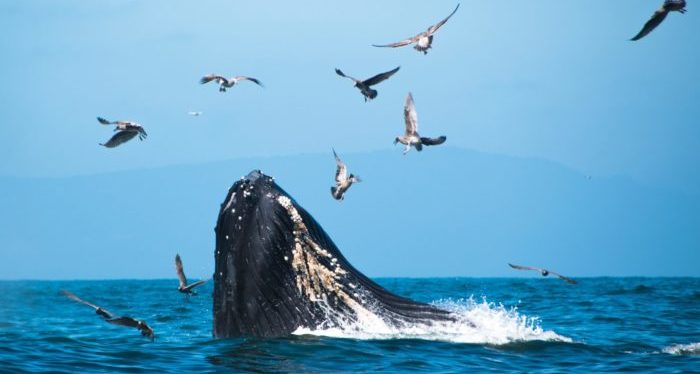CSIRO published a research according to which the abundance of krill could impact future whale populations in the Southern Hemisphere such as Blue, Southern Right and Fin whale. The impact of whaling from the previous century drove a number of whale species almost to extinction, with some species still below their pre-whaling numbers.
The research was led by Dr Viv Tulloch, who commented that this was the first time scientists had been able to link climate change to the future abundance of krill and how this could influence whale populations in the Southern Hemisphere.
The results of the research focus on the importance of krill populations to assist the recovery of whale populations.
According to Dr Tulloch
Krill is the main food source for whales, so we linked possible changes to krill levels in our southern oceans based on high carbon emissions predictions to whale populations in these areas.
He continued that the research found out that the effects on whale species are various, since they mostly depend on the region and on where they feed.
In addition, whale populations located in the Pacific Ocean, mostly Blue, Southern Right and Fin whales are most likely to have less krill to feed on, in comparison to those found in the Atlantic and the Indian Oceans.
[smlsubform prepend=”GET THE SAFETY4SEA IN YOUR INBOX!” showname=false emailtxt=”” emailholder=”Enter your email address” showsubmit=true submittxt=”Submit” jsthanks=false thankyou=”Thank you for subscribing to our mailing list”]
CSIRO’s Model of Intermediate Complexity for Ecosystem Assessment (MICE) was used to predict these future scenarios using data on ocean temperature, primary productivity and sea-ice.
Moreover, CSIRO senior scientist and co-author of the paper Dr Éva Plagányi highlighted the impact the changing environment has due to ocean’s temperature increase.
Dr Plagányi concluded that the research was based on the slow population growth rates of whales, the connection between life history and water temperatures, and dependency on prey to highlight the need for ongoing protection of already depleted whale populations.




























































